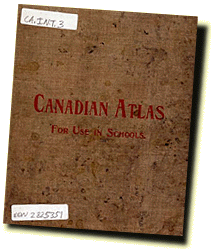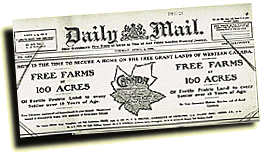
In 1900 a Canadian essay contest open to students in every British school drew 90,000 participants. Each child received an atlas and a specially- commissioned text book. The first prize was five pounds sterling, and winners received bronze medallions embellished with Canada's coat-of-arms. It was an inspired idea, because children took the books home, where they were seen by parents. Names and addresses of Canadian agents in Britain appeared inside the cover of the atlas. |
 National Library of Canada |

| The Early Years 1870-1897 |
Advertising in Britain 1900-1916 |
Advertising in Europe 1900-1920s |
Presenting newcomers to Canada, 1910-1911 |
Advertising in the United States 1900-1920s |
Advertising in Britain 1920s |
